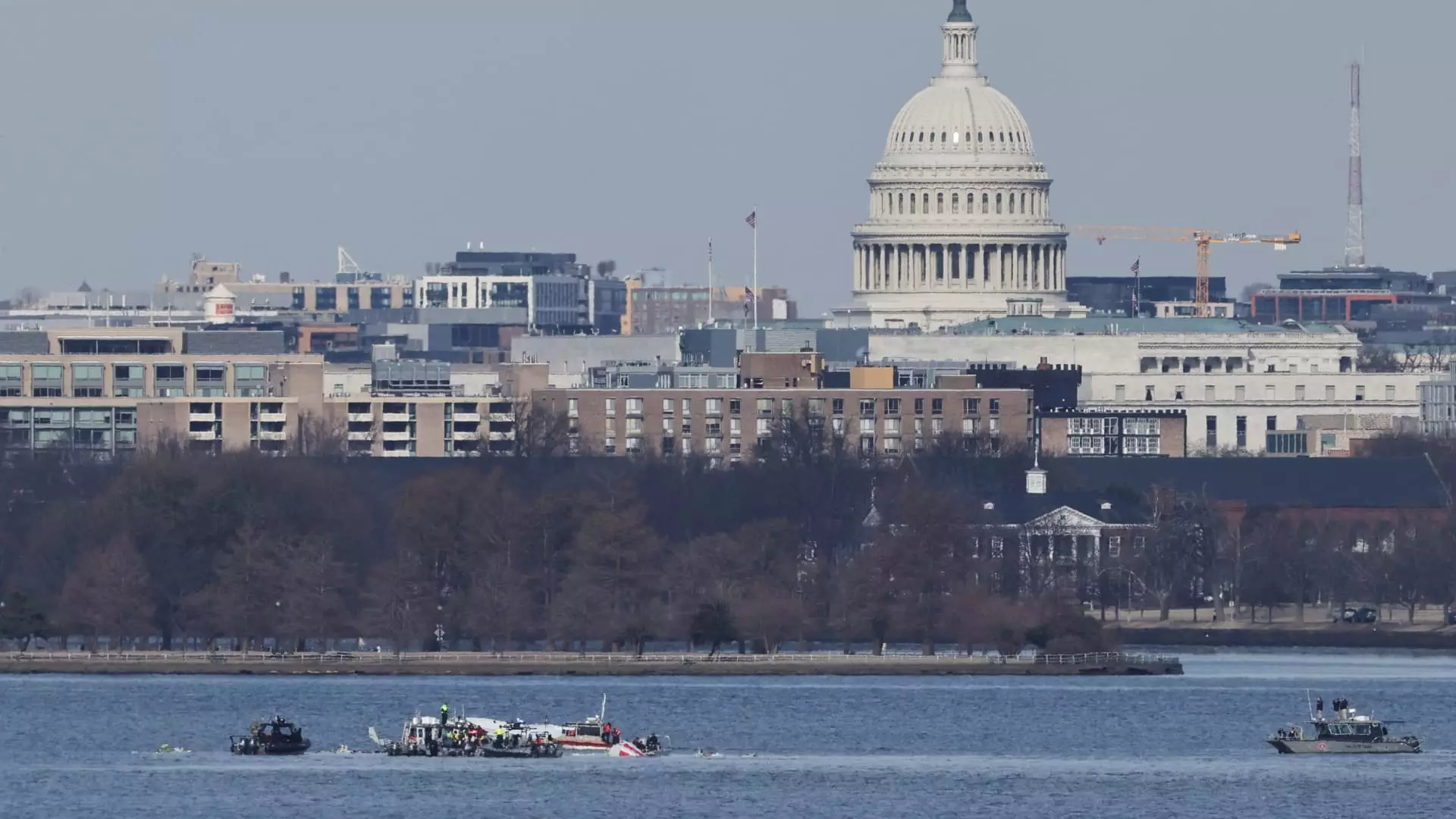The recent calamity involving an Army Black Hawk helicopter and an American Airlines jetliner has sent shockwaves through the aviation community and the public at large. On a fateful Wednesday evening, the skies over the Potomac River turned deadly as Flight 5342 and the military helicopter collided in an incident that claimed the lives of all 64 passengers on the airliner and three individuals aboard the helicopter. This incident marks the most catastrophic U.S. air crash since 2001, reigniting discussions regarding aviation safety protocols, air traffic control challenges, and regulatory compliance, particularly in high-density airspaces like that surrounding Washington, D.C.
As investigators sift through the wreckage and collect data from flight recorders, the question of how this tragic incident occurred looms large. Initial reports indicate that the commercial flight of PSA Airlines, a regional branch of American Airlines, was making its final approach to Reagan National Airport when it was struck by the Black Hawk, which was on a training flight at an altitude that may have exceeded federal limits. The regulations stipulate that helicopters should maintain a maximum altitude of 200 feet while flying in the airspace surrounding the capital, but confusion arises around the Black Hawk’s compliance with these rules.
NTSB member Todd Inman emphasized the uniqueness of the Washington, D.C., flight environment, which is governed by specific helicopter routes designed to manage the considerable air traffic. Such complexity requires rigorous adherence to operational protocols, and the investigation will seek to determine whether any such protocols were violated, particularly regarding altitude constraints.
In the wake of this tragedy, the Federal Aviation Administration (FAA) has responded proactively by instituting new flight restrictions applicable to helicopters navigated around the D.C. area. Notably, these restrictions aim to enhance safety, especially for areas near busy airports such as Reagan National. Helicopters are now limited in Zone 4 to flying south of the Woodrow Wilson Bridge, effectively reshaping the previous landscape of aviation routes in this congested airspace.
This adjustment serves not only to mitigate risks but also to emphasize the critical need for vigilance in monitoring aerial activities. Public officials, including Defense Secretary Pete Hegseth, have acknowledged the existence of potential lapses, asserting that the U.S. military is committed to a thorough evaluation of the operational protocols that led to the incident.
This catastrophic event brings to light a broader narrative on aviation safety in the United States, which had not seen a fatal commercial air crash in over a decade. The rise in passenger traffic, which has surged more than 25% since 2009, raises legitimate concerns about the efficacy of current air traffic control systems, especially in light of staffing shortages at key airports like Reagan National.
Preliminary reports indicate that the traffic management at the airport during the time of the accident was less than optimal, with controllers possibly overloaded due to personnel shortages. Notably, standard practice at busy air traffic control towers, particularly in major metropolitan areas, includes assigning dedicated personnel to manage helicopter traffic. However, in this instance, roles were combined, potentially increasing the risk of miscommunication or oversight.
The dual nature of air travel—combining commercial operations with military and emergency services—demands an exceptionally high standard of regulatory oversight and operational discipline. Following the tragic collision, key figures in the aviation and military sectors have begun to re-evaluate the existing frameworks that govern aerial operations in metropolitan airspaces.
President Trump’s public commentary regarding the altitude of the helicopter highlights an urgent insistence on accountability and transparency, although such statements also evoke questions about the appropriateness of defining operational failures publicly at such an early stage of investigation.
As the NTSB continues its inquiry, the findings will likely influence changes in regulations that govern flight operations in high-density areas. Key among these will be a renewed emphasis on robust training for air traffic controllers, clear communication protocols, and the imperative for continuous monitoring of military and civilian flight activities within shared airspace.
Ultimately, the heart-wrenching collision over the Potomac River serves as a stark reminder of the need for vigilance in aviation safety regulations and practices. As we reflect on the tragedy, the aviation industry must come together to learn and implement lessons to prevent such avoidable losses in the future. Every facet—from air traffic controller staffing to compliance with altitude regulations—requires meticulous oversight and continuous evaluation to ensure that our skies are safe for all users, military and civilian alike.


Leave a Reply